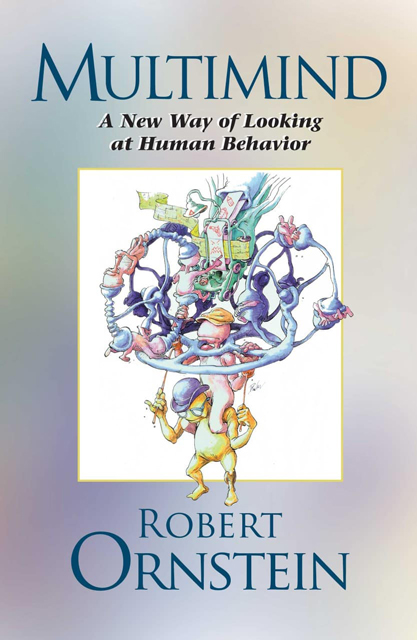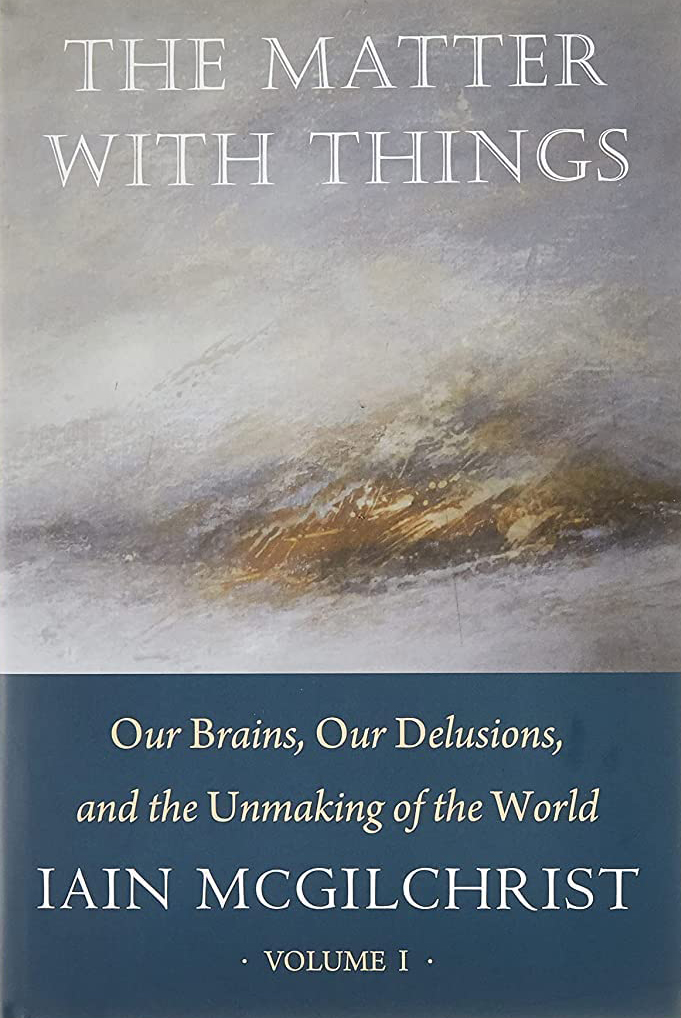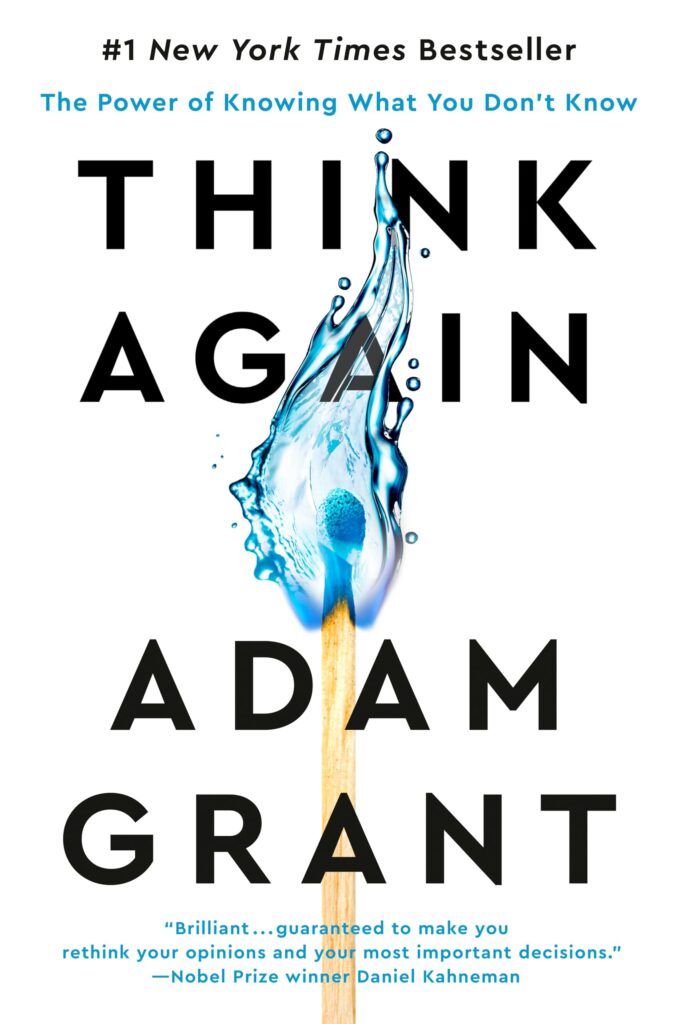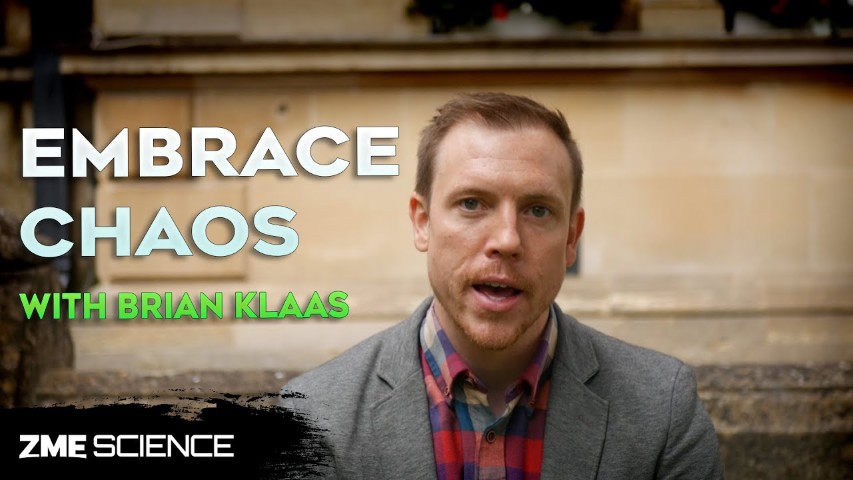
Book Review
Fluke
Chance, Chaos, and Why Everything We Do Matters
By Brian Klaas
Paperback edition 2025
Reviewed by Mel Raff
Contributing Writer
“Does everything happen for a reason, or does stuff… just happen?”
Thinking about how our lives unfold, we tend to focus on a relatively small number of key, pivotal events. But in Fluke, political scientist Brian Klaas explains how this oversimplifies and misrepresents the way our world actually works—with dire consequences. Contrary to our instinctive beliefs, cause and effect are never simple and easy to understand: any specific outcome is dependent not only on what appear to be the major events leading up to it, but also on an array of seemingly insignificant, arbitrary, easily overlooked factors, “flukes”—some under our control, but countless others not.
At the beginning of the book Klaas picks an astonishing example to establish his point: he asks, what led the US to select Hiroshima and Nagasaki as targets for their atomic bomb attacks at the end of World War II? It turns out that the military originally selected not Hiroshima, but Kyoto, as the prime target, but Secretary of War Henry Stimson had visited Kyoto with his wife almost 20 years earlier and fallen in love with the city. Stimson stubbornly refused to approve the destruction of his beloved Kyoto, repeatedly insisting on a different target. Furthermore, the primary target for the second bomb, dropped three days later, was not Nagasaki but Kokura, spared at the last minute only due to unexpected cloud cover. In these instances, hundreds of thousands of lives were spared—and hundreds of thousands of others lost—owing to one couple’s vacation experience and a minor, unpredictable weather event.
In this case, we have a clear record of certain “pivot points” leading to the ultimate outcome. But we don’t realize that our own lives hinge on many invisible pivot points—small decisions and events that, had they happened differently, would have changed everything radically. Missing a bus, for example, might have prevented a couple from meeting and their children and grandchildren from being born. Or arriving late for a meeting might have thwarted a career-changing promotion. Our lives are continuously filled with such imperceptible, apparently insignificant, inflection points, “flukes,” that have far-reaching effects, and we have no way to imagine how things might have diverged if such points had worked out differently. As the educator Idries Shah’s story, “Moment in Time,” illustrates:
“What is Fate?” Nasrudin was asked by a scholar.
“An endless succession of intertwined events, each influencing the other.”
“That is hardly a satisfactory answer. I believe in cause and effect.”
“Very well,” said the Mulla, “look at that.” He pointed to a procession passing in the street.
“That man is being taken to be hanged. Is that because someone gave him a silver piece and enabled him to buy the knife with which he committed the murder; or because someone saw him do it; or because nobody stopped him?”
Small events having outsized consequences means that changing any one thing can change everything, and the apparent key decision points in our lives are actually the outliers, unusual only because we are aware of them and can imagine how our lives might have changed otherwise.
Contingent Convergence
Blinding us to the entangled nature of our shared existence is our inflated belief in the power of our own agency—the “delusion of individualism.” This oversimplified view of reality follows from our instinctive answer to a fundamental question: do big events determine outcomes (“convergence”) or do outcomes depend on innumerable, small but consequential events (“contingency”)? Convergence implies that changes are relatively smooth and converge on a certain outcome—that is, “everything happens for a reason.” But contingency paints a picture of less predictable changes that might have drastically different outcomes, depending on random details—a world full of important “accidents.”
Seeking to answer this question, a team of evolutionary biologists in 1988 employed the compressed lifetimes of microbes in a Long-Term Evolution Experiment to test how bacteria would evolve. Using a single common ancestor, the scientists allowed twelve separate populations to evolve under identical conditions over almost ten years, examining 70,000 generations of bacteria. Convergence would dictate identical results, or very nearly so. And for almost ten years, that was exactly the case. But then, one of the twelve environments diverged markedly from the rest, producing a mutant version of the bacteria with remarkable, new capabilities.
Investigation revealed that the divergent bacterium had undergone 5 small, unrelated mutations, the first 4 occurring in the only sequence which could possibly have enabled the fifth, which produced the unique, startling result. Over the life of the experiment, only that one ever produced the surprising mutation. The resulting conclusion is what Klaas terms “contingent convergence:” the world appears to proceed in an orderly, predictable fashion—think “survival of the fittest”—until some accident, or series of apparently random events, suddenly changes everything—a catastrophic meteor following just the right path to collide with Earth, for example.
Our Storytelling Brains
So if the world is actually not convergent, why do we insist on thinking it is? As discussed in detail in our section Our Mind in the Modern World, our brains have not evolved to allow us to perceive reality but instead just to navigate reality successfully—they filter reality down to a useful but abbreviated approximation (a mere set of signals curated from what is actually there, what psychologist Robert Ornstein called “quick and dirty sketches of the world,” a “best guess about reality”). For this reason, Klaas calls us “the Shortcut Creature.” Through shortcuts, our brains are adept at perceiving patterns—whether they’re there or not! We loathe chaos and instead see patterns of cause and effect, even when not present. This is one reason why we are storytellers: a series of events without cause and effect is just a sequence, not a story. When we can find no explanation, we invent one because any explanation is better than none—ultimately leading to the belief that events are moving toward some pre-determined end point, that “everything happens for a reason.” In The Sufis, Shah points out what we’re missing by this: “Because the average person thinks in patterns and cannot accommodate himself to a really different point of view, he loses a great deal of the meaning of life. He may live, even progress, but he cannot understand all that is going on.” Klaas explains that our shortcut, best guesses about reality prove perilous when long-standing circumstances change; as our world becomes more complex, shortcuts that have proved successful turn dysfunctional.
Chaos Theory and Black Swan Events
Underpinning the contingency view of reality is Chaos Theory, which actually posits not chaos, but an intricate order to complex systems such as the world we live in. A useful illustration emerged from studying the dense locust swarms that catastrophically denuded huge swaths of US farmland in the 1870s—an example of a complex system where discrete, small events (individual locusts’ movements, in this case) cause adjustments to, and interactions with, other small events (i.e., movements of other locusts in response). These in turn cause further adjustments, eventually reaching a tipping point where all these small events suddenly cascade into much larger, consequential events—Black Swans (i.e., abrupt, unanticipated but momentous events), such as the devastating locust swarms. Remarkably, these cascades turn out to be anything but random: scientists have determined that locust swarming is triggered when density reaches the tipping point of precisely 7.37 locusts per square meter. Locust behavior remains individual, relatively stable and predictable, right up until that tipping point. Then suddenly everything transforms into a surprising and destructive mass swarm—a Black Swan.
Recent Black Swans such as the COVID-19 pandemic or the 2008 financial crisis may appear random and unpredictable, but only because we mistakenly view reality as proceeding from a limited number of identifiable causes to their inevitable effects. We fail to recognize that we are stumbling along the precipices of invisible tipping points which can surprise us with sudden, Black Swan events—which we then mistake for outliers, inexplicable, random crises. This “mirage of regularity” is an illusion created by our unfounded sense of control over the world, the belief that we live in a stable, “normal” order interrupted by occasional random aberrations. In reality, the infinitely complex system comprising our modern world has led us to extraordinary levels of sudden, catastrophic risks—not only because of our locust-like density (8 billion people!) and the unprecedented acceleration of change, but also because of our increased interconnectedness, where for example, the internet empowers instantaneous, many-to-many communication of ideas, information, and misinformation.
“It’s Tough to Make Predictions, Especially About the Future”—Yogi Berra
Turns of events depend on many factors we simply ignore, plus others we can’t even anticipate—though we imagine we can. Thinking we know the important variables, we think we can make predictions—but too often, we have no idea what will be important and therefore omit it from our calculations. For example, consider trying to predict how people would communicate in the 21st century—before mobile phones, texting, or the internet even existed. Even just predicting the future can affect that future—think of how measures of consumer confidence can affect the economy, for example. As our future has become more uncertain, we have paradoxically become more precise in our predictions. Conflating map and territory, we mistake our simplified models for reality.
We insist on such oversimplification because our brains are wired to think of our lives as a story of the rational, strategic choices we make to determine the best outcomes. But our choices are not rational; they’re based on our beliefs, which are influenced by many factors beyond the rational, including impulse, emotion, faith, and even our microbiomes. This need to oversimplify creates false narratives of our experiences, reducing reality to a non-existent “cookie-cutter version of rationality,” and our individual beliefs and created stories affect each other, like individual locust movements: “8 billion humans are making decisions based on 8 billion different sets of ideas,” all interacting with one another.
Other often-overlooked factors affecting what we do include geology and geography—the physical world we live in. For example, challenging climate conditions may have affected human brain development; ancient cities developed on the boundaries of tectonic plates; civilizations were bounded by the terrain and obstacles created by geological forces (seas, mountains, deserts); and movements of tectonic plates over millennia created differences in soil fertility among different regions, which enriched certain locations over others. So where we are in the world is also important because it constrains our choices and life trajectories.
Who we are is also critical. Thomas Carlyle’s 19th-century “Great Man Theory” reflected a long-held view that key individuals determine the course of history. A later and contrasting convergent view posits that social trends and dynamics shape the leaders, that history inevitably leads to a particular end point, and the individuals involved are interchangeable. But Klaas argues that none of us are replaceable cogs in a machine that winds on, converging toward a pre-determined end, but rather we are all unique actors whose choices together determine the course of history.
When matters, too, yet our simplifying shortcuts almost always exclude timing from our thinking about cause and effect. Most all of our lives are affected by contingencies of timing, paths crossing in ways not perceptible. Hitting the snooze button to wake a few minutes later changes everything. But timing is invisible—we cannot know what would have happened had we stayed a few moments later or left a few moments earlier. But we do know that things would have been different. Yet we consistently ignore timing, as though only the components of a situation matter, not their sequence. But consider if COVID had appeared in 1950 how much more slowly it would have spread—and how much less productive locked-down countries would have been without the remote computing that enabled working from home.
This oversimplified understanding of cause and effect encourages us to try to separate the “signal” from the “noise,” ignoring chance and complexity. Klaas contends there’s no “noise” at all; everything is “signal,” relevant and determinative. But acknowledging that makes prediction enormously more difficult: “rocket scientists would admit that predicting the broadly stable behavior of planets and moons is a piece of cake compared to making correct long-term predictions within the complex systems of 8 billion intertwined humans.” A more accurate interpretation of reality requires accounting for constantly changing circumstances and points of view—and including outlier information that looks like “noise”—and finally, referring to uncertainty as a dragon, Klaas accepts that “some uncertainty cannot be slayed. No matter how hard we try, the flukes of life will continue to mystify us.”
Can We Live Better, Happier Lives If We Embrace the Chaos of Our World?
Admittedly, this view of our world seems bewildering and strange to our shortcut brain’s understanding of how things work—but it’s unmistakably closer to reality than our storybook convergence view. Everything is so entirely interconnected that if we change anything, we change everything. So what are we to do with this new worldview?
This complex, contingent web of experience is, as Klaas points out, exhilarating because it means that “we all are the living manifestation of 13.7 billion years of flukes,” and most importantly, it means that everything we do matters.
He maintains that living based on a reductive misunderstanding of the world dooms us to Sisyphean attempts to optimize everything toward “achieving some undefinable human progress.” Our civilization is vastly more prosperous than any in history, yet we are more discontent than ever—because of our misguided need to control the world, an impossible goal that cannot produce fulfillment and, ironically, actually makes the world less controllable and more uncertain, placing us constantly on the edge of a tipping point, more susceptible to catastrophic Black Swan events than ever before. We doggedly optimize business, science, even our personal lives, eliminating wherever possible anything not obviously useful or productive, anything not directly contributing to whatever “bottom line” we’re pursuing. This can generate certain efficiencies, yes. But it also creates unseen risks by removing slack that can provide resilience—for example when the wide-spread practice of just-in-time manufacturing left us at the mercy of pandemic-inflicted supply chain problems, triggering worldwide shortages and inflation.
This complex, contingent web of experience is, as Klaas points out, exhilarating because it means that “we all are the living manifestation of 13.7 billion years of flukes,” and most importantly, it means that everything we do matters.
Certain problems can indeed be addressed by increasing efficiency—optimizing and exploiting proven tactics and strategies where clearly applicable. But others are too complex for that and require an approach less focused on optimization and more on exploration, experimentation and discovery. More of our world than we think is of this latter type, Klaas says, and our actions are much too slanted toward the former.
“We may control nothing, but we influence everything.”
We need to seek less efficiency and more resilience—not by removing slack from our systems but by building it in. We need order and structure, but we also need uncertainty and disorder—a balance of the two. This is an argument for exploration and appreciation of simple pleasures and surprises over a constant striving for ever more efficiency and progress: “Embracing the beauty of uncertainty means a bit less emphasis on how your individual action in the present can produce an optimized future, and a bit more emphasis on celebrating the present that has been created for you, the symphony of our lives that is being played by an orchestra of trillions of individual beings hitting their respective notes across billions of years, culminating in this utterly unique, contingent moment.”
About the Book’s Author:
Brian Klaas grew up in Minnesota, earned his DPhil at Oxford, and is now a professor of global politics at University College London. He is a contributing writer for The Atlantic, host of the award-winning Power Corrupts podcast, and a frequent guest on national television. Klaas has conducted field research across the globe and advised major politicians and organizations including NATO and the European Union. You can find him at BrianPKlaas.com and on Twitter @BrianKlaas.

Multimind: A New Way of Looking at Human Behavior
Robert E. Ornstein
This provocative book challenges the most-popularly held conceptions of who we are. In it, psychologist and renowned brain expert Robert Ornstein (1942 – 2018) shows that, contrary to popular and deep-rooted belief, the human mind is not one unified entity but, rather, is multiple in nature and is designed to carry out various programs at the same time.

The Matter with Things
Iain McGilchrist
In his masterly two-volume exploration of our brain hemispheres, Iain McGilchrist argues that in order to understand ourselves, the world and the universe, we need a combination of the right and left hemispheres working in tandem, but with the right brain leading the way.

Beyond Culture:
Edward T. Hall and Our Hidden Culture
Report by John Zada
Edward T. Hall, after spending his early adulthood working and travelling among non-Anglophones, both in the United States and in other parts of the world, became cognizant and fascinated in the deeper layers of culture that he claimed lie buried beneath those more obvious forms.

Think Again
Intelligence is usually seen as the ability to think and learn, but in a rapidly changing world, there’s another set of cognitive skills that might matter more: the ability to rethink and unlearn.
In the series: Our Mind in the Modern World
- An Ancient Brain in a Modern World
- Our Unconscious Minds
- Maintaining a Stable World
- The Multiple Nature of Our Mind
- Connecting with Others
- Morality’s Long Evolution
- Unconscious Associations
- The Brain’s Latent Capacities
- God 4.0
- Multimind: A New Way of Looking at Human Behavior
- Thinking Big
- Social
- The WEIRDest People in the World
- The Righteous Mind
- New World New Mind
- Moral Tribes
- The Mountain People
- The Matter with Things
- Humanity on a Tightrope
- Beyond Culture
- Think Again



